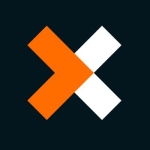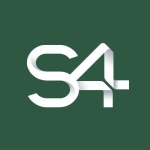What is our primary use case?
Primarily we use it for automating back-office operations processes. Some of the most frequent use cases are:
1. Invoice processing and proofing.
2. Reconciliation
3. Automating Timesheets
4. SOW invoice creation.
5. Creation of Credit memos
6. Pulling data from SAP and generating a report.
We use VDIs to deploy. Client & runner environment is mostly Win 10. Most of the bots are scheduled.
Some organizations still use the manual click on the run button method instead of scheduling or running from CR.
How has it helped my organization?
It has definitely helped automating a lot of processes, but it is very difficult to build resilient bots. It is very difficult to find skilled developers in the market, who actually build resilient bots with appropriate error handling. Maintaining the bots is another challenge as the applications keep changing.
It is even more difficult to support a bot than build from scratch. No matter how much you document, things do turn haywire if someone new has to make changes to an existing bot.
Documenting the AA Solution SDD, PDD is another pain point. It is very common to miss out on a lot of things.
I feel that in places it is better to create a system to automate rather than use RPA.
What is most valuable?
Most of the features are valuable.
1. SAP GUI commands in the latest update is helpful as a lot of processes have SAP involved. 2. APIs are helpful too, but they certainly need more improvement. APIs help in building resiliency.
3. Queues are great but need improvement. They are helpful because most of the automations are transaction-based.
4. Good old object cloning is always helpful as it is versatile.
5. Metabots help in working with many of the legacy applications. But needs improvement there as well.
6. Credential Vaults are helpful, but needs improvement there too.
What needs improvement?
1. Excel commands should include more features.
2. Need more variable types for eg. date, amount, number, etc
3. Better API support and more APIs.
4. Queues should be enabled to directly connect to DBs.
5. Managing so many variables is a pain. Some kind of variable initialization mechanism like how Blue Prism has it will be helpful.
6. Input-output variables should be defined for taskbots as well.
7.There are a lot of glitches in AA not fixed since Ver 10. Reach me to know more about them.
8. The commands should help evaluate the current state of variables(like how in Blue prism)
10. Metabots should have command to stop the task. Basically should have all commands of a task bot.
11. No one uses "WorkFlows".
12. The user roles and the Credential Vaults administration, sharing and the whole thing in action is very confusing.
13. Automatic technical logging option should be given by default in all commands like how we have in BP.
Buyer's Guide
Automation Anywhere
October 2025
Learn what your peers think about Automation Anywhere. Get advice and tips from experienced pros sharing their opinions. Updated: October 2025.
869,832 professionals have used our research since 2012.
For how long have I used the solution?
What do I think about the stability of the solution?
When it comes to RPA, for every step things should be in the right way at the right time. It is very difficult. So I would rate it as a 5 out of 10 on scalability.
What do I think about the scalability of the solution?
It is scalable, though, in an organizational setup where teams work in silos, I have never seen any organization truly using the scalability to its full potential.
How are customer service and support?
Technical support is okay. At times it takes a lot of email exchanges involved before actually setting up a call and getting help.
Which solution did I use previously and why did I switch?
AA is all I am using. Blue Prism is used but I prefer AA. Though Blue Prism is better in certain aspects mentioned earlier.
How was the initial setup?
It is the same as how enterprise applications should have in terms of complexity.
What about the implementation team?
We develop RPA solutions for clients.
What's my experience with pricing, setup cost, and licensing?
Costs are ok. IQ Bot is too expensive. Bot Vision should come for free as one can easily use a number of other visualization options for free. There is no point in paying too much for too little.
Which other solutions did I evaluate?
I have evaluated Blue Prism along with AA
What other advice do I have?
We need some support of documentation methodologies so that the knowledge is easily transferrable through the documents.
Which deployment model are you using for this solution?
Private Cloud
If public cloud, private cloud, or hybrid cloud, which cloud provider do you use?
Microsoft Azure
Disclosure: My company has a business relationship with this vendor other than being a customer. My company is an AA partner. I am a developer




















